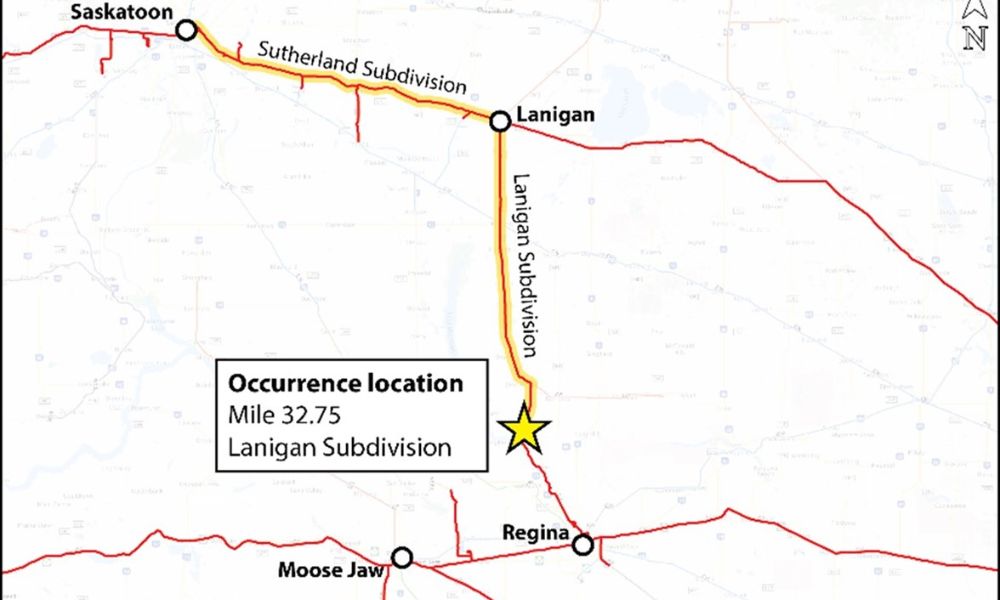No one injured during the incident

Pre-existing fatigue cracks on the rail led to the 2021 derailment of a Canadian Pacific Railway (CP) freight train carrying potash, found the Transportation Safety Board of Canada (TSB).
The incident happened on October 16, 2021, when a CP train hauling 200 freight cars loaded with potash was proceeding south on the Lanigan Subdivision.
The train experienced a train-initiated emergency brake application near Silton, Saskatchewan. When the train came to a stop, a conductor inspection found that 27 freight cars had derailed into a large pile.
There were no injuries, and no dangerous goods were involved.

Source: Transportation Safety Board of Canada (TSB)
However, many of the freight cars had been breached and their contents subsequently released, according to TSB.
Examination of four rail pieces found on the site found that there had been separate semi-elliptical fatigue cracks on the rail, according to TSB.
“Semi-elliptical fatigue cracks are features usually associated with pre-existing fatigue cracks that have grown in size over time due to repeated loading,” the TSB said.
“The 2 cracks eventually merged and created a larger semi-elliptical crack, the area of which represented about 15% of the total area of the worn rail head. The remaining portion of the fracture surface was composed of coarser features with some faint chevrons, indicating that the fatigue crack propagated down to the base of the rail in a sudden overstress as the occurrence train passed over it.”
The frequency of rail flaw detection (RFD) testing on the Lanigan Subdivision exceeded regulatory requirements, according to TSB.
And testing was performed shortly before the accident and no rail defects were identified.
However, the process is not perfect, TSB said.
“While RFD testing is a reliable and cost-effective method to detect rail flaws, its accuracy is limited by current technology and other factors such as rail surface conditions and the size and type of defects. Given these limitations, rails with internal defects can sometimes be misclassified as free of defects, increasing the risk of failure and subsequent derailment.”
Repair work of the destroyed section of track was completed the day after the accident. Total cleanup of the site was finished on Oct. 27, 2021, reported CTV News.





